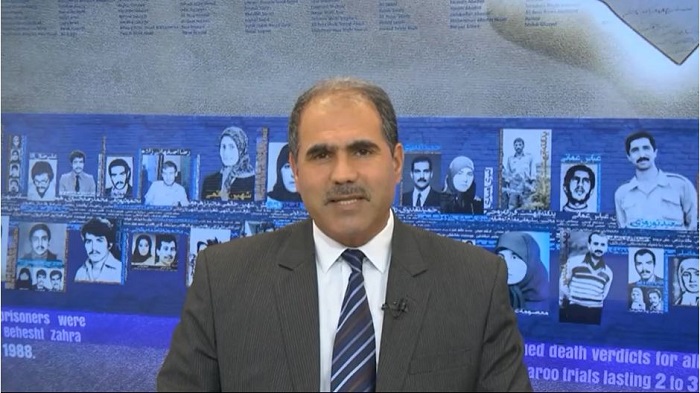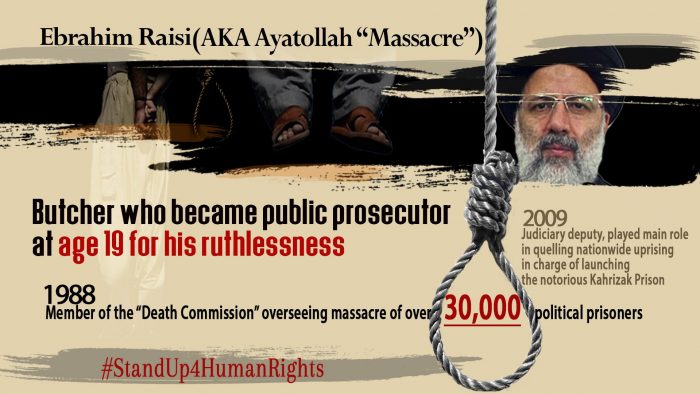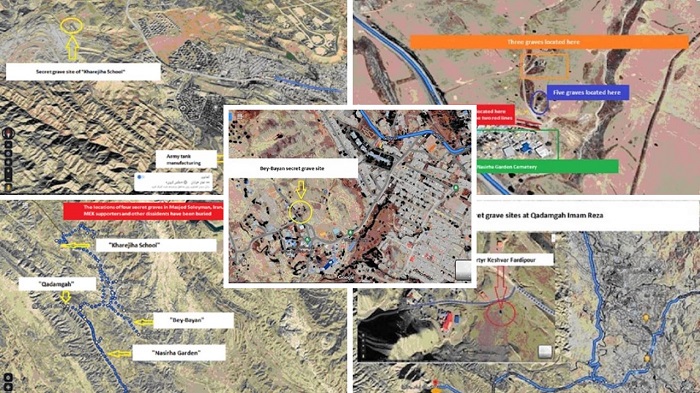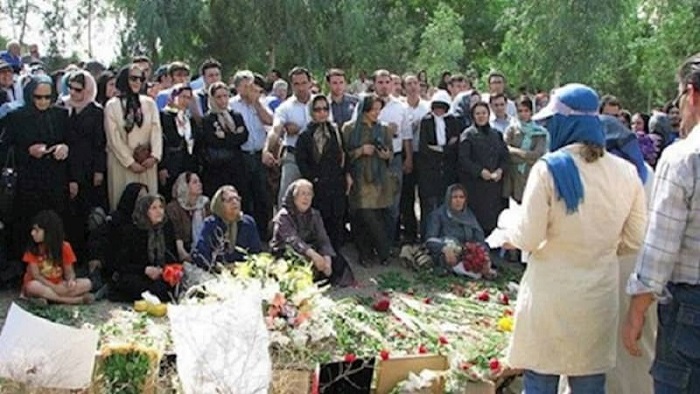
(PMOI / MEK Iran) and (NCRI): Seyyed Hossein Seyyed Ahmadi. Two of my brothers were executed in the 1988 massacre. My older brother Seyyed Mohsen Seyyed Ahmadi and my other brother Seyyed Mohammad Seyyed Ahmadi.
The People’s Mujahedin of Iran (PMOI / MEK Iran) was the target of a fatwa issued by the then Supreme Leader, Ruhollah Khomeini, declaring dissenters guilty of “enmity against God” and deserving of death. Tehran formed death commissions in prisons, and within months, they had carried out an estimated 30,000 executions.
Raisi principal offenders of the massacre
President Ebrahim Raisi, who was recently sworn in, is thought to be one of the principal offenders of the massacre. In the summer of 1988, he was only 21 years old.
Raisi became a notorious member of the “death commission” that oversaw the execution of political prisoners of which the majority of them, were MEK members.
His expertise, according to a political prisoner, was his absolute commitment to supporting the Supreme Leader and his corrupt system at all costs.

(PMOI / MEK Iran) and (NCRI): Ebrahim Raisi, a mass murderer (Henchman) of MEK activists and political prisoners appointed as head of the Iranian regime’s Judiciary.
Seyyed Hossein Seyyed Ahmadi
The National Council of Resistance of Iran (NCRI) has recently spoken out against the regime’s crimes committed during that time.
Seyyed Hossein Seyyed Ahmadi gave his testimony as a relative of the victims of the tragedy. According to Ahmadi, “Two of my brothers were executed in the 1988 massacre. My older brother Seyyed Mohsen Seyyed Ahmadi and my other brother Seyyed Mohammad Seyyed Ahmadi.
Seyyed Mohsen was executed in Gohardasht Prison in Karaj. And Seyyed Mohammad was executed in Evin Prison. They were both executed in 1988. They were part of the first group that was executed on July 30, 1988, by henchmen without even having a trial.”

(PMOI / MEK Iran) and (NCRI): The Deputy Intelligence Minister at the time, Reza Malek, also gave a specific number, he said 33,700.
MEK is the most serious threat to the clerical regime
The Mojahedin organization maintained its structure after the leadership and hierarchy of all Islamic Republic opposition groups were dissolved, making it the most serious threat to the clerical regime.
As a result of this, inmates claiming to be MEK supporters were subjected to severe torture and were held in deplorable conditions.
After they were executed, the regime buried the prisoners in secret mass graves and their families were prohibited to organise funerals.

(NCRI) and (PMOI / MEK Iran): On this day I was witnessing new phenomena where all the MEK were standing tall and defending their ideals.
None of the MEK martyrs’ bodies were given to their families
“I wanted to mention a point about the pressures on our family after they refused to hand over the bodies of these martyrs. This was not confined to our family. None of the Mojahedin-e-Khalq martyrs’ bodies were given to their families.
For a long time, my parents would visit various prisons and authorities, demanding to at least receive the bodies of these martyrs. But the regime did not do this.” Ahmadi said.

(NCRI) and (PMOI / MEK Iran): I saw 12 people got up and left while chanting slogans such as Long live MEK… The guard shouted at them.
Burial sites of the massacre
Burial sites of the massacre have been identified in at least 36 cities, and it is unknown how many has the regime destroyed since their discovery.
The US and Amnesty International released reports in 2017 that detailed the destruction of the martyrs’ graves.
The destruction of this evidence threatened to prevent the regime from being held fully accountable for the death toll of the massacre.

(NCRI) and (PMOI / MEK Iran): 4 More Mass Graves Discovered From the 1988 Massacre in Iran.
Graves of these martyrs
“In relation to the location of the graves of these martyrs, to the extent that we know and pursued information, the regime did not reveal a specific place.” He concluded.
“But mothers made efforts subsequently and found out that Gohardasht and Evin prisoners were buried in Khavaran Cemetery.”

(NCRI) and (PMOI / MEK Iran): Letter to the UN Secretary-General, EU and US leaders, and international human rights organizations.
MEK Iran (follow us on Twitter and Facebook)
and People’s Mojahedin Organization of Iran – MEK IRAN – YouTube
